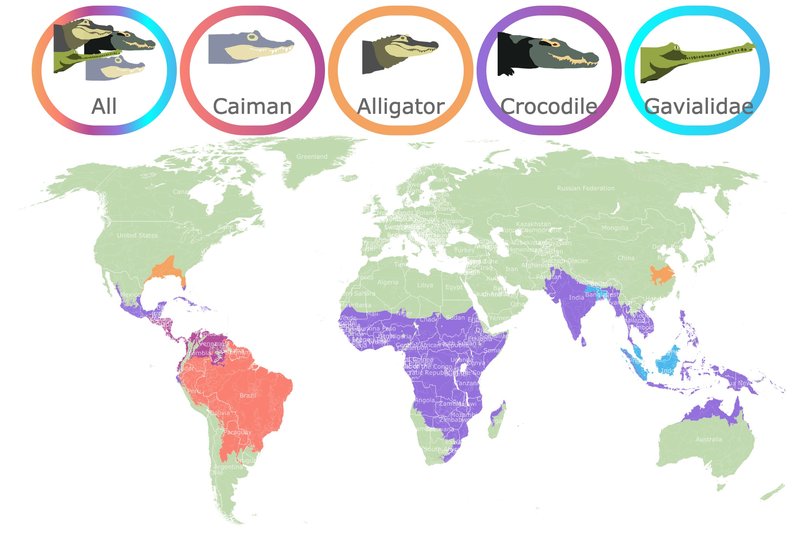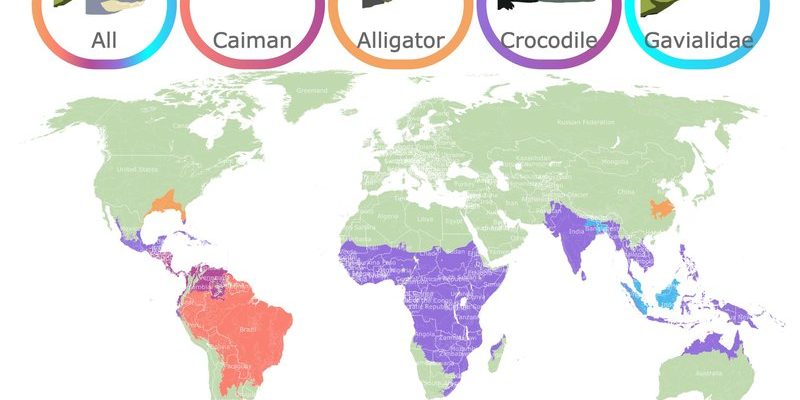
When we think about saltwater crocodiles, we often conjure images of tropical beaches or dense swamps. But the truth is, they’re much more versatile than that. They have a wide distribution that spans across several continents and can thrive in both freshwater and saltwater environments. So, if you’ve ever wondered where to find these amazing reptiles, keep reading; the journey might surprise you!
Distribution of Saltwater Crocodiles
Saltwater crocodiles, also known scientifically as *Crocodylus porosus*, inhabit a vast range of environments. They’re primarily found in coastal regions, but their adaptability allows them to venture much further inland and into various water sources. The primary regions where you’ll find saltwater crocodiles include:
- Australia: Particularly concentrated in northern areas like Queensland and the Northern Territory.
- Asia: Countries like India, Indonesia, and the Philippines are home to significant populations.
- Africa: They can be found along coastal areas of eastern Africa, especially in countries like Mozambique.
- Oceania: Islands in the Pacific, such as Papua New Guinea and the Solomon Islands, are also welcoming homes for these reptiles.
This broad distribution highlights their incredible adaptability. Whether it’s brackish water in mangroves or thriving in saltwater lagoons, these crocs are the ultimate survivors.
A Closer Look at Their Habitat
Saltwater crocodiles are unique in their ability to thrive in various environments. You might be surprised to learn that their habitats range from mangrove swamps to river estuaries. This adaptability is one reason they can be found in such diverse locations.
Here’s a closer look:
- Coastal Areas: Saltwater crocs are famous for patrolling the coastlines of tropical regions. They often bask on beaches, blending in with their surroundings.
- River Systems: These reptiles can swim upstream into freshwater rivers and tributaries, increasing their hunting grounds.
- Mangroves and Wetlands: Mysterious mangroves serve as perfect breeding grounds, providing cover and abundant food sources.
Honestly, their ability to adapt to various habitats gives them an edge over other crocodile species. It’s like they’ve mastered the art of living in practically any waterway!
Saltwater Crocodiles in Australia
Australia is often regarded as the heartland of saltwater crocodiles. The country boasts some of the largest populations globally. If you’re exploring northern Australia, keep your eyes peeled—you might just spot one lounging in the sun or swimming majestically through the waters.
In northern Queensland and the Northern Territory, these crocodiles are more than just a tourist attraction; they are an integral part of the ecosystem. Here’s what makes their presence in Australia special:
- Protected Areas: Certain regions have established protected areas to safeguard these creatures and their habitats, helping conservation efforts to flourish.
- Ecotourism: Many tour companies offer experiences to safely observe these magnificent reptiles in their natural habitat, raising awareness about their importance.
- Local Mythology: Indigenous Australians have a profound respect for saltwater crocodiles, often featuring them in their stories and beliefs.
If you ever visit Australia, consider taking a guided tour into crocodile territory. It’s a remarkable way to witness their power and grace up close.
Saltwater Crocodiles in Southeast Asia
Southeast Asia provides another hub for saltwater crocodiles, where many countries host thriving populations. From the dense jungles of Indonesia to the tropical beaches of the Philippines, these reptiles have carved out a niche for themselves.
- Indonesia: Known for its diverse wildlife, Indonesia’s islands are home to numerous saltwater crocs, especially in areas like Komodo and Flores.
- The Philippines: Here, saltwater crocodiles can thrive in numerous freshwater rivers, transitioning into coastal waters with ease.
- Malaysia: The mangrove forests of Malaysia offer excellent breeding grounds, making it a crucial habitat for saltwater crocs.
The tropical climate and abundant food sources, like fish and birds, contribute to their successful populations in these regions. It’s fascinating how different environments can influence their behavior and diet!
Saltwater Crocodiles in Africa
In Africa, saltwater crocodiles are less common but still play a vital role in the ecosystem. You’ll typically find them along the eastern coast, with Mozambique being one of the prime habitats.
- Coastal Habitats: These crocodiles can be found basking on sunny beaches or lurking in estuaries where freshwater meets the ocean.
- Rivers and Lakes: They often venture into rivers, hunting fish and other prey. Their camouflage makes them adept at catching unsuspecting animals.
- Conservation Challenges: Habitat loss and hunting pose significant threats to their populations in Africa, making conservation efforts critical.
Understanding their presence in Africa reminds us of the intricate balance of ecosystems and how vital these creatures are to their environments.
Exploring Their Range in the Americas
While saltwater crocodiles are primarily associated with regions in the Pacific and Indian Oceans, they can also be found in parts of Central and South America. Their presence here is not as robust as in other regions, but they do roam in certain areas.
You might spot them in:
- Florida, USA: While primarily known for American alligators, Florida also has saltwater crocodiles, particularly in the southern regions.
- Caribbean Islands: Islands such as Cuba and Jamaica host small populations, thriving in coastal mangroves and rivers.
Their ability to thrive in various climates showcases the incredible adaptability that saltwater crocodiles possess. Each region adds a unique layer to their story, hinting at the evolutionary strategies they’ve developed.
The Importance of Saltwater Crocodiles in Ecosystems
Saltwater crocodiles aren’t just powerful predators; they play a crucial role in maintaining the health of their ecosystems. As apex predators, they help regulate the populations of various species, which contributes to biodiversity.
Here’s how they impact their environment:
- Population Control: By preying on weaker or sick animals, they help keep species populations balanced.
- Habitat Maintenance: Their nesting habits can help shape the landscape of mangroves and wetlands, promoting healthy ecosystems.
- Indicator Species: As a top predator, their health reflects the overall state of their habitat, indicating changes in environmental conditions.
Understanding the significance of these magnificent reptiles reminds us of the interconnectedness of all life forms. Each creature, no matter how large or small, plays its part in the grand story of nature.
Saltwater crocodiles are fascinating creatures with a wide-ranging presence across multiple continents. From Australia’s coastlines to the mangroves of Southeast Asia and the rivers of Africa, their adaptability is nothing short of remarkable. They embody a blend of beauty and danger, reminding us of nature’s incredible diversity.
As we learn more about where saltwater crocodiles can be found around the world, it becomes clear just how vital they are to their ecosystems. Protecting their habitats is essential not just for their survival, but for maintaining the balance of nature itself. So next time you think of these powerful reptiles, remember the complex web of life they are a part of and the importance of preserving their world for future generations.

